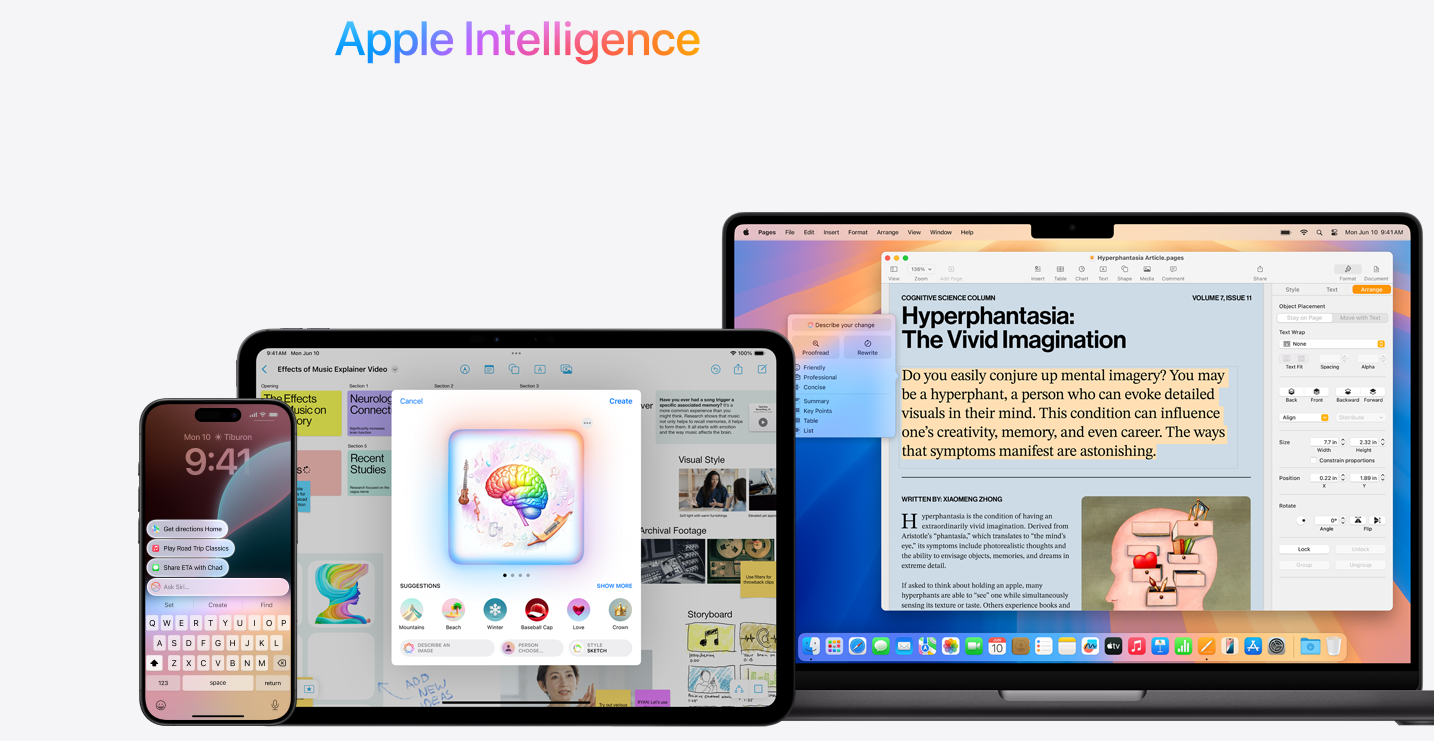In less than a month, both Google and Apple have announced that they are promoting artificial intelligence in smartphones. Announcements and intentions in a field that has become ultra competitive where uses still remain to be defined. Is AI making a forceful entry into mobile phones or is its arrival legitimate? Explanations.
5 mins
If Apple CEO Tim Cookpronounced the words “artificial intelligence” nearly sixty times during WWDC, he did not mention its direct competitor Google and even less the Gemini voice assistant which will not be integrated on the Apple platform. Tim Cook didn’t say the word either Windows (“Windows”, in English) preferring that of tiles (“tiles”, in English).
This is not anecdotal and relates to the strategic choices of these digital behemoths (we are talking about Gafam for Google, Apple, Facebook, Amazon and Microsoft) who are all moving forward cautiously, knowing that they are being rigorously observed, but ardently wishing to be the first in the privileged area of AI.
Just before Apple’s WWDC, Google I/O took place and it was the same wave of future artificially intelligent services integrated into smartphones. This frantic race of Gafam where everyone observes and copies each other has started on November 30, 2022, when OpenAI released ChatGPT with fanfare.
Since then, the leaders have positioned themselves on the market and more recently in mobile phones. Google, with Android, has taken a step ahead of Apple. “ We are among the leaders and in the best place for this turn. We have been working on AI for years with more than 3,000 patents “, explain François Hernandez, vice president and director of the mobility division of Samsung which uses Google’s Android platform. “ At Samsung, the system is open, we work hand in hand with Google and Microsoft. We are at the very beginning of the story, this will open up perspectives. »
“ It works almost immediately for the user »
A new field of promises linked to AI which are announced at Apple like Android, certainly, but what is it in concrete terms? According to Yann Masoch, entrepreneur in Silicon Valley: “ In AI, there are several, even an infinite number of models which depend on the end use such as: answering questions, helping to write an email, creating an image, erasing an element on a photo, listening to the user speak, driving a car… In short, there is no limit and the more the models give good and precise results (precision is defined in FP “floating point” floating point number), the bigger they are. All of these models run in the cloud on extremely fast servers with lots of memory. »
Can these calculation or response capabilities be integrated into a smartphone? “ Embedding this on cell phones is impossible. This is why we are starting to see lightweight models for mobile. Of course, light imposes restrictions: less precision, limits in answers/knowledge, but it works almost immediately for the user », comments Yann Masoch who adds: “ We are starting to talk more and more about “multi-modality”. This is not a new term, it is common in man/machine interface. Current models, like ChatGPT for example, include several types of input (text, voice, video, sound, image, etc.) and can also provide several types of output. » Multimodal AI processes and interprets multiple types of data simultaneously: text, images, sounds and sensory data in the same way humans interact with the world, using a combination of sensory inputs.
“ We adopt tools, not technologies »
“ Now we talk to machines like we talk to humans », explains François Hernandez. “ AI reduces technological friction. Everything becomes completely integrated and fluid for the user. It changes the experience radically. At Samsung, we have a hybrid approach with AI, either “on device” (i.e. the chip that runs in the phone) and also with the cloud. »
According to Yann Masoch: “ We are going to have more and more AI in mobiles but in a transparent way. In the same way as facial detection to unlock your phone, to obtain instant automatic translation or even retouch your photos, many AI services already exist. We just use them without realizing it. » Because we talk about AI but we mainly use tools, explains trainer Fred Cavazza : “ we adopt tools, not technologies […] ChatGPT is not a product, it is a technical demonstrator. »
The question remains, what purpose will AI be used in the toolbox that a smartphone represents? “ Apple will only do something in AI if it is useful to its customer », insists journalist Emmanuel Torregano who adds: “ Apple wants it to be useful and they will only do so once they find out what AI can be used for. » The answer is not yet completely obvious, but all manufacturers are in the starting blocks to position themselves on the market. The race is on.

